"Buffalo's Million Dollar Park"
Erie Beach Park - Ontario
Part 1: 1900 - 1920

Fort Erie Beach Park began in the late 1880's when five Buffalonians leased
11 acres along the shore near Fort Erie, Ontario.
Their intention was to make money by operating a pleasure grounds and by selling
summer home plots to Americans.
A fairground and picnic grove already existed on the site called "The Grove,"
an apt term describing the
shaded landscape.
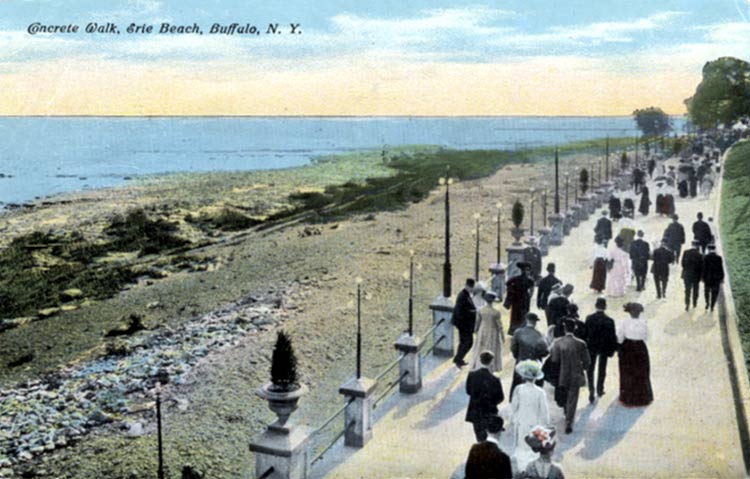
By 1904, the group had purchased the land, set up service by 2 ferries between
Buffalo and Fort Erie, and
constructed a 3-mile narrow-gauge railroad to transport visitors from the ferry
landing to the new Erie Beach Park.
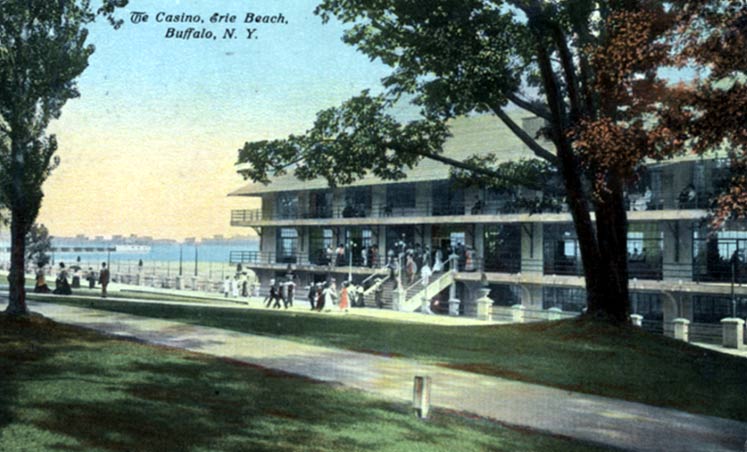
By 1910, the group had secured legal permission to improve the property. They
constructed a concrete casino, a 65-room hotel,
utitlities including power generation and sewage handling, a stadium and midway
attractions. There was no fee to enter the
grounds; the round-trip ferry fee was $.25, $.10 for children. Rides were pay-as-you-go.
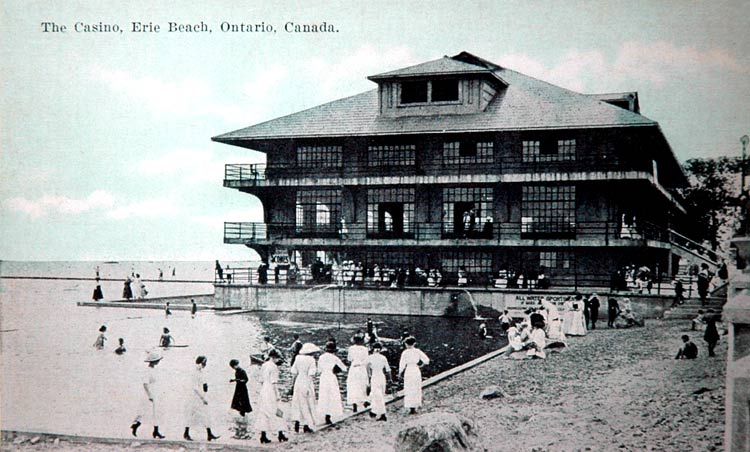
In 1911, they also formed the Erie Beach Realty
Company and began offering plots of land for sale to Americans for $120 - $400
for 50 x 150 parcels.
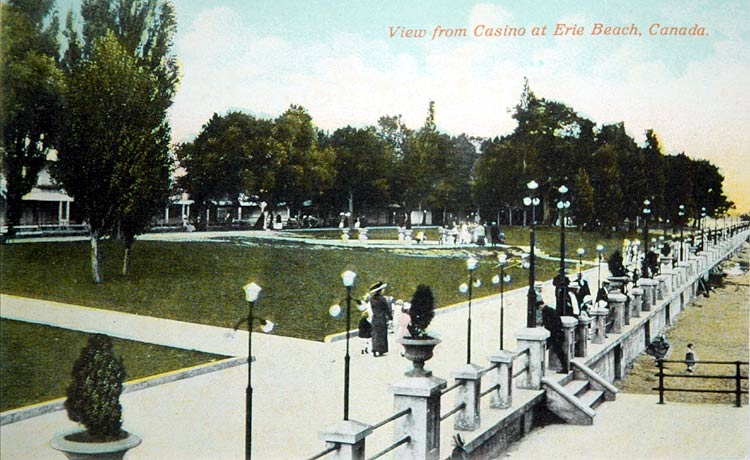
Despite the park's popularity and the additional income from the ferry service,
the group failed to make the profits they desired and
in 1915 sold the Erie Beach Park to another Buffalonian, Frank Bardol, for $110,000.
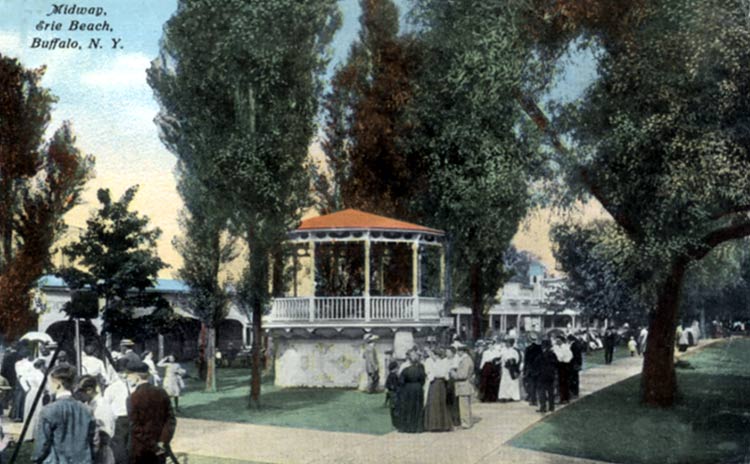
A new owner brought a fresh infusion of cash and Bardol made improvements aimed
at increasing visits by Buffalonians as well as
Canadians.
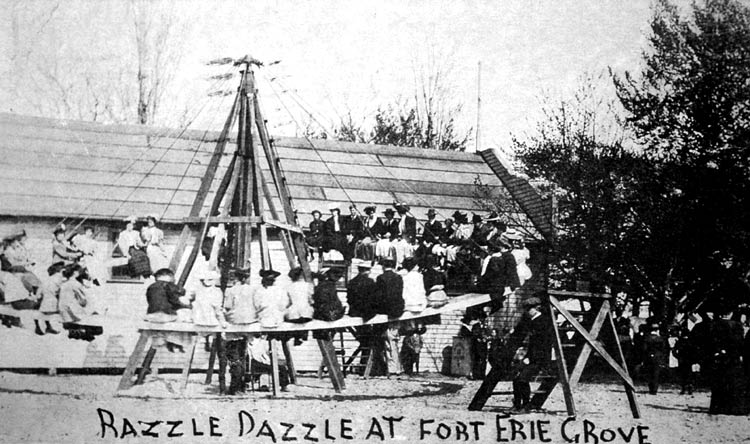
Erie Beach had faced a competitor almost from its inception in nearby Ridgeway
from Crystal Beach, which also featured
a Razzle Dazzle.
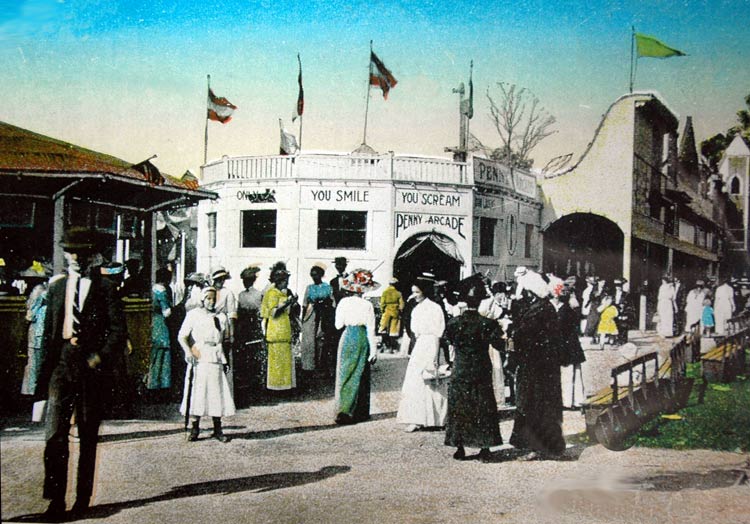
Crystal Beach could not boast of shaded picnic grounds where the weary worker
could rest in bucolic landscapes on his/her
one day off because it had no shade trees. Crystal Beach had sand beaches and
aggressive owners who were
continually working to offer the latest and greatest midway attractions. The
rivalry would continue until 1930.
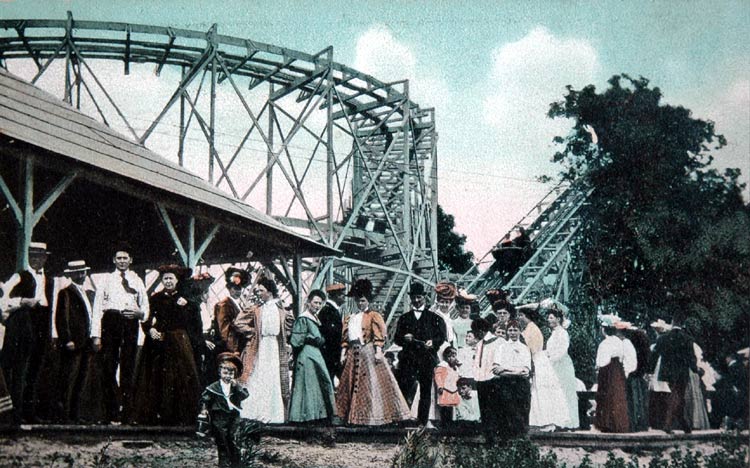
Concessionaires offered ice cream, popcorn, suckers, root beer, ginger beer,
lemonade and orangeade. The food at the
hotel was highly rated.
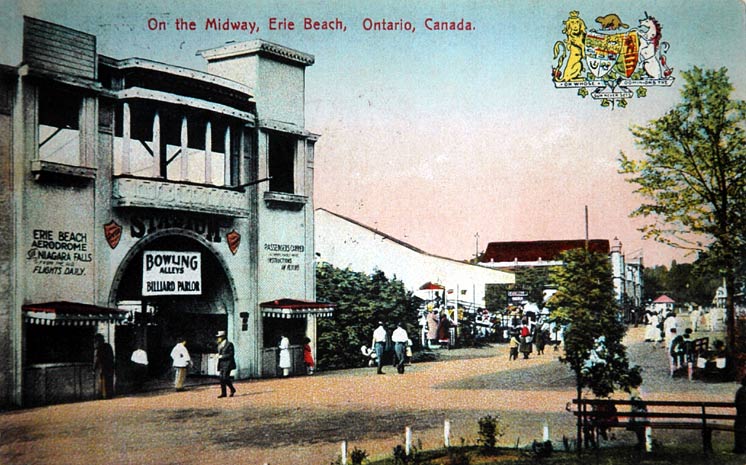
Frank Bardol opened an aviation school and promoted airplane trips from the
aerodrome he built at the Stadium.
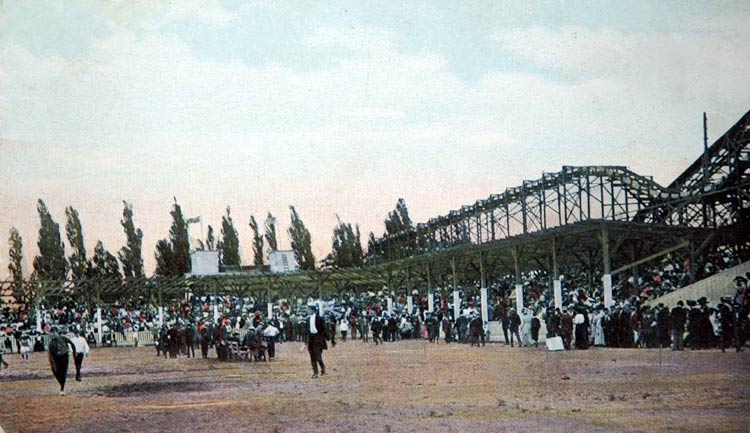
Erie Beach Park proved continuously popular with visitors on both sides of the
border, offering big-name band concerts and
dancing. The season, which began in May and ended after Labor Day, attracted
as many as 20,000 people on weekends.
In 1920, with the World War receding into the past and people eager for a good
time, there was no reason to doubt
that Erie Beach had a bright future.
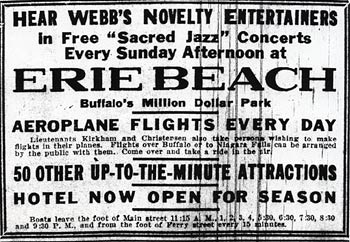
Buffalo Daily Courier, June 22, 1919
(Part 2 1920-1930)
Grateful thanks to Erin Wilson, Curator of Structural Heritage,
Fort Erie Museum; Linda
Bleichfeld, collector who generously permitted copying of most of these images;
Linda Banas and Barb Goldman for coordinating a site visit and providing spring
photos of the Erie Beach Park grounds.
Reference materials include Crystal Beach: The Good Old
Days, by Erno Rossi; a detailed website
by a coaster enthusiast with many references to rides; Waverly Beach
Chronicles, by Debby Cohen; Many Voices: A Collective History of Fort
Erie, published by the Fort Erie Museum Board; and newspaper articles from
the time.
For more information on Western New York's "Pleasure
Parks," see Rose Ann Jankowiak-Hirsch's article in the Summer/Fall
2003 issue of the Heritage Press Mgazine. Copies are still available for
sale (716) 893-4011.
Back to WNY Heritage
Press Home











